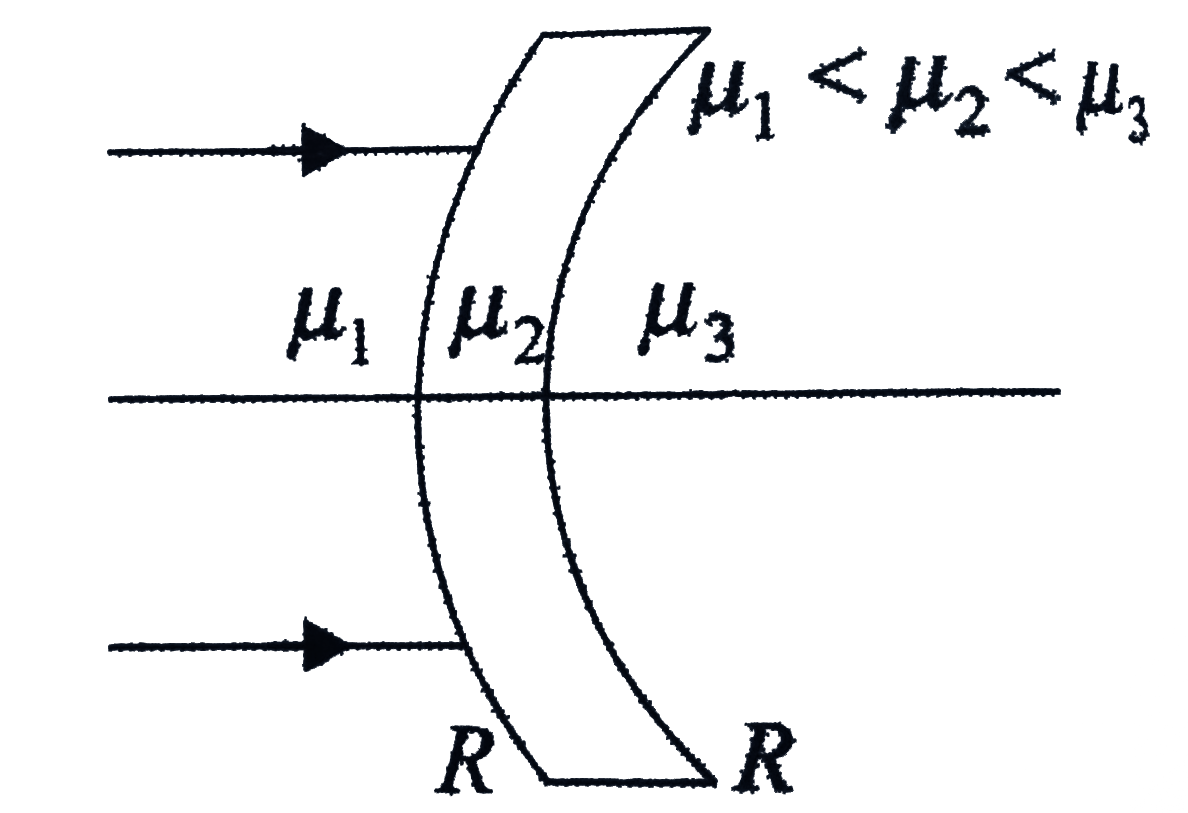Assertion:Although the surfaces of goggle lens are curved, It does not have any power.
Reason: In case of goggles, both the curved surfaces have equal radii of curvature and have centre of curvature on the same side.
If both Assertion and Reason are true and the Reason is correct explanation of the Assertion.
If both Assertion and Reason are true but Reason is not the correct explanation of the Assertion.
If both Assertion is true, but the Reason is false.
If both Assertion is false but the Reason is true.
The correct Answer is:A
1f=(μ−1)(1R−1R)
f=∞
∴P=1f=0
Topper's Solved these Questions
- BOOK - DC PANDEYCHAPTER - REFRACTION OF LIGHTEXERCISE - Level 1 Objective38videos
REFRACTION OF LIGHT
- BOOK - DC PANDEYCHAPTER - REFRACTION OF LIGHTEXERCISE - Objective Questions1videos
REFRACTION OF LIGHT
- BOOK - DC PANDEYCHAPTER - REFRACTION OF LIGHTEXERCISE - Exercise 31.88videos
REFRACTION OF LIGHT
- BOOK - DC PANDEYCHAPTER - REFLECTION OF LIGHTEXERCISE - Subjective9videos
REFLECTION OF LIGHT
- BOOK - DC PANDEYCHAPTER - SEMICONDUCTORSEXERCISE - Subjective12videos
SEMICONDUCTORS
Similar Questions
Knowledge Check
- Question 1 - Select One
Assertion : Although the surfaces of a goggle lens are curved, it does not have any power.
Reason: In case of goggles, both the curved surfaces have equal radii of curvature.AIf both assertion and reason are true and reason is the correct explanation of assertion.BIf both assertion and reason are true but reason is not the correct explanation of assertion.CIf assertion is true but reason is false.DIf assertion and reason both are false. - Question 2 - Select One
Statement I: Although the surfaces of gogggle lengses are curved, it does not have any power.
Statement II: In case of goggle, both the curved surfaces have equal radii of curvature and have center of curvature on the same side.AStatement is True, Statement II is True, Statement II is correct explanation for Statement IBStatement I is True, Statement II is True, Statement II is NOT a correct explanation for Statement I.CStatement I is True, Statement II is False.DStatement I is False, Statement II is True. - Question 3 - Select One
A convex lens (with material of refractive index of 3/2) has two surfaces of equal radii of curvature R. The magnitude of its focal length is
AR2BRC2RDzero
The surfaces of the sun glasses (goggles) are curved, yet their power may be zero. Why ?
View SolutionThe radii of curvature of both the surfaces of a lens are equal. How will its focal length and power change if one of the surfaces of the lens is made plane ?
View SolutionFind the focal length of the lens shown in Fig . The radii of curvature of both the surfaces are equal to R.
 View Solution
View SolutionCurved surfaces of a plano-convex lens of refractive index μ1 and a plano-concave lens of refractive index μ2 have equal radius of curvature as shown in figure. Find the ratio of radius of curvature to the focal length of the combined lenses.
 View Solution
View SolutionIn the above question the radius of curvature of the curvature of the curved surface of plano-convex lens is :
View Solution

